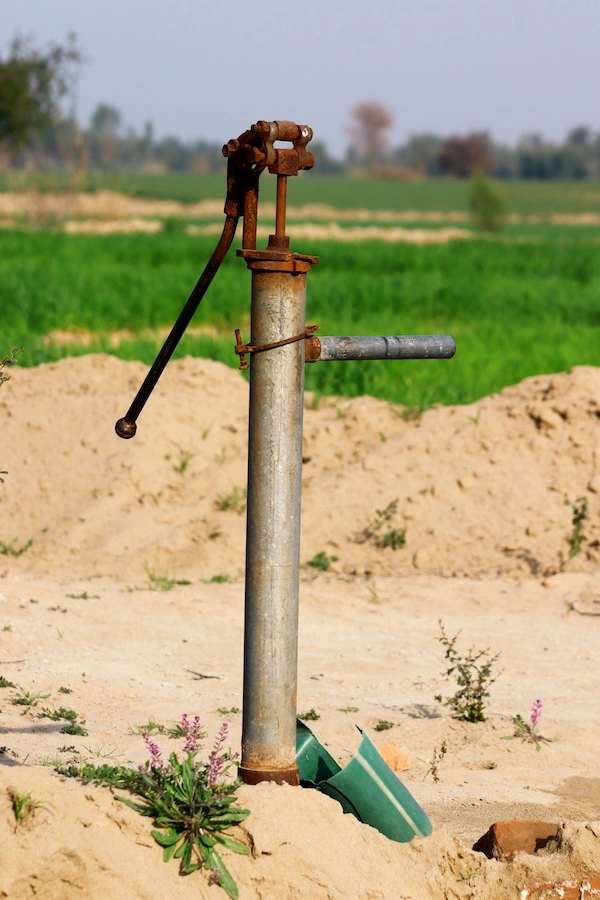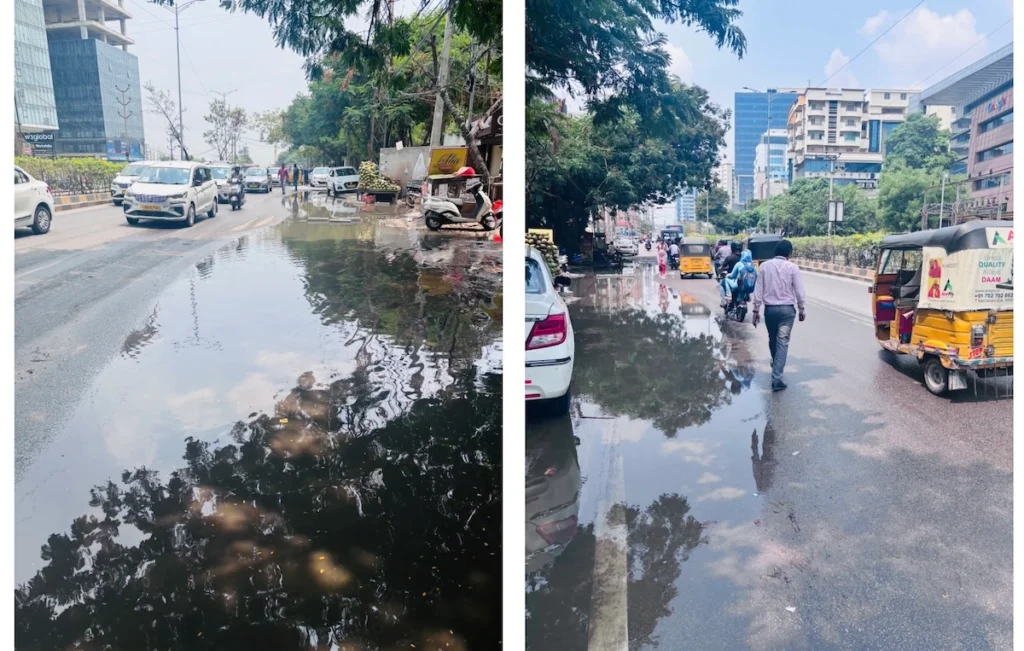These past few days, there has been a lot of chatter in my society’s WhatsApp group about water usage. Every other day, the association sends out reminders, urging residents to conserve water due to scarcity. But given the frequency of these messages, it makes me wonder – how many people are genuinely paying attention?
This situation reminded me of a concept I read about a while ago: The Tragedy of the Commons.
The Tragedy of the Commons
In 1968, ecologist Garrett Hardin introduced the concept of the Tragedy of the Commons, warning that when resources are shared without individual accountability, collective overconsumption becomes inevitable. His argument was strikingly simple – when people don’t bear the direct consequences of their consumption, they tend to overuse resources, leading to their depletion.
Each man is locked into a system that compels him to increase his herd without limit – in a world that is limited. Ruin is the destination toward which all men rush, each pursuing his own best interest in a society that believes in the freedom of the commons. Freedom in a commons brings ruin to all.
Hardin was not the first to observe this phenomenon. Centuries earlier, Aristotle noted:
For that which is common to the greatest number has the least care bestowed upon it. Every one thinks chiefly of his own, hardly at all of the common interest; and only when he is himself concerned as an individual.
Whether it’s Hardin’s grazing lands or Aristotle’s observations, their insights remain as relevant today as they were in their time. From water shortages to waste management, the tragedy is unfolding all around us.
Growing up in my hometown, we lived in an independent house. The municipal water supply was unreliable, and it wasn’t uncommon to see people queuing up in front of hand pumps with buckets. Almost every night, after my father returned from the office, he and I would head to a hand pump about 100 meters from our house – me with a small bucket, and him with a much larger one. Some days, we made multiple trips. We stored this water in large containers, carefully monitoring its usage, especially during summers.
My neighborhood friends and their dads would often be there too, exchanging jokes, sharing political opinions, or chatting about the latest local news before heading back. Honestly, the concept of water cooler conversation might have started right there. For us kids, it felt like a mini adventure – we’d compete to see who could carry their bucket the fastest without spilling water. Strange how, as children, we could find joy in the most mundane tasks!

Today, we no longer have to line up at hand pumps, thanks to the motor that pumps water into the overhead tanks we built at home. But we still remain mindful – because if the tank runs dry, the inconvenience is ours alone. That sense of accountability naturally keeps us careful.
Living in a gated society now, I see a stark contrast. With groundwater reserves dwindling, the society relies heavily on water tankers. The cost of this water is – supposedly, as the association’s messages claim – divided equally among all residents, irrespective of individual consumption. On paper, it seems fair. In practice? It has its unintended consequences.
When everyone pays the same, the incentive to conserve disappears. Whether you use 200 liters a day or 500, your bill remains unchanged. The mindset shifts to “We’re paying for it anyway.” Leaking taps, long showers, and careless wastage become the norm. And just like that, the tragedy of the commons plays out.
This isn’t an isolated issue. Last year, photos circulated on social media showing residents of a gated society in Noida queuing up to fill buckets from water tankers. In Bangalore – the so-called IT hub of India – even some of the most premium societies faced severe water shortages.
The same dynamic extends to public cleanliness. Most of us take pride in maintaining spotless homes. The floors gleam, the walls are pristine, and even a stray speck of dust is unacceptable. But step outside, and the contrast is glaring. Littering in public spaces is disturbingly common. Railway tracks lined with plastic waste, overflowing garbage dumps, and clogged drainage systems are a familiar sight.
Public spaces – railway stations, roads, and even parks – are littered with plastic wrappers, empty bottles, and overflowing garbage. Years ago, I visited Robbers Cave in Dehradun, a beautiful spot with a stream flowing through the cave. The place looked pristine – until a few plastic bottles and empty wrappers came floating by, shattering the illusion.
In Hyderabad’s Hitec City, a road near major tech offices has a drain that remains perpetually clogged, choked with trash from nearby shops and careless passersby. But no one cares because it’s a collective problem. I wonder if they’d be just as indifferent if it were their own toilet getting clogged.

I once saw a viral video of a man littering on a train. When a fellow passenger called him out, he shrugged it off, saying, “I’ve paid the government for my ticket; it’s their job to clean it.” How do you even begin to argue with that logic?
In another video, a railway employee was caught dumping garbage directly onto the tracks. At least in that case, he was promptly suspended.
But why this disconnect? The answer is the same – public spaces, much like water in a society, are a shared resource. And when responsibility is shared, accountability evaporates. Ultimately, we all pay the price – both economically and environmentally – for our collective negligence.
Of course, the blame is placed on the municipal corporation. But let’s face it – our actions play a role in fueling this broken window economy.
Breaking Free from the Tragedy of Commons
The Tragedy of the Commons doesn’t have to be our fate. Many countries have shown that individuals can respect shared resources – whether driven by genuine awareness or the fear of strict penalties. Take Singapore, for example, where hefty fines for littering ensure public spaces remain immaculate.
To address this, we need a two-pronged approach – an immediate fix for what’s already broken and a long-term solution to strengthen our roots through education.
For example, in the case of water management, societies can install individual water meters to track consumption. Pay-per-use models encourage mindful consumption, as residents see a direct link between their actions and their expenses.
But while these measures can drive short-term accountability, they’re merely temporary fixes. What we truly need is a mindset shift – and that starts with how we educate the next generation.
Back when I was in school, we had a subject called Moral Science. On paper, it was meant to instill values, ethics, and social responsibility. But in reality it was often treated as a free period, and neither the students nor the teachers took it seriously. The subject disappeared in higher classes, as if moral lessons were no longer necessary as we grew older. I’m not even sure if it still exists in school curricula today.
But if it doesn’t, maybe it should.
The Tragedy of the Commons isn’t just an economic or environmental issue; it’s a moral one. Teaching children to think beyond their self-interest, to understand the impact of their actions on society, and to value shared resources is essential. And this can’t be achieved through the occasional “Clean Your Surroundings” poster competition.
Imagine a Moral Science curriculum that evolves with age – starting with simple lessons on empathy and responsibility in primary school, progressing to discussions on civic duties and environmental ethics in middle school, and leading to debates on systemic issues in high school. Students could analyze real-life cases of water crises, pollution, and waste management. They could be encouraged to propose solutions and participate in community projects, , learning that responsibility isn’t just an abstract concept but a lived practice.
Equally important is how the subject is taught. It needs passionate teachers who believe in what they’re imparting – mentors who spark discussions and encourage critical thinking. Morality cannot be memorized for an exam; it has to be understood, questioned, and applied. Our education policy must treat Moral Science as a core subject, not an afterthought.
Read also the Lessons From My Maths Teacher That Shaped My Career
After all, it’s far easier to nurture responsible citizens than to fix the damage caused by indifferent ones.
Ultimately, overcoming the Tragedy of the Commons requires a shift in perspective – from “someone else’s problem” to “our shared responsibility.” Much like how I once viewed my independent water tank as a resource to be managed carefully, we must see our environment, water, air, and public spaces as extensions of our own homes.
Because the cost of negligence isn’t just a higher water bill or a clogged drain – it shapes the quality of our lives and the world we leave behind.
Thanks for reading. Please leave a comment with your thoughts. And share this blog with whoever you think might like it.
Go Deeper on Data, Finance, and Productivity
If you enjoyed this article, you’ll love my newsletter, Compound Knowledge, where I share actionable ideas and the best resources I’ve found to help you uplevel your skills in data, finance, and productivity. It’s concise, valuable, and free.
Join the inner circle of readers and get insights directly in your inbox.
Photo Credit:
- Feature Image: Photo by Jouni Rajala on Unsplash
- Hand Pump: Photo by Anees Ur Rehman on Unsplash
